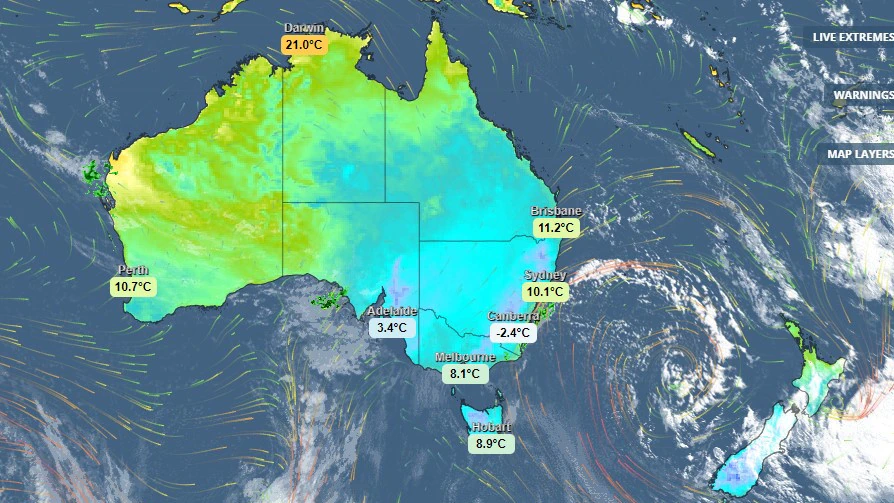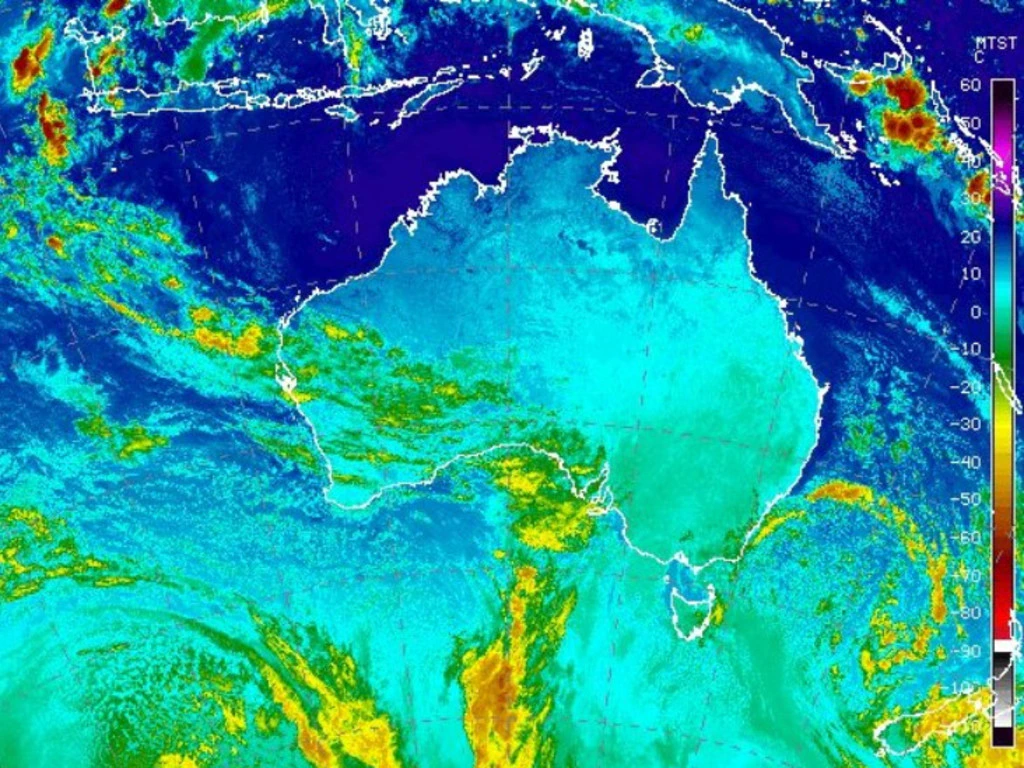Temperatures have dropped below freezing in parts of southeast Australia due to the cold air coming from the south of the continent.
The Bureau of Meteorology issued frost warnings for parts of Victoria and South Australia on Monday morning.

A spokesperson said the cold air coming from the southern ocean was being driven by a low pressure system in Australia’s Tasman Sea.
Daytime and nighttime temperatures are expected to be below average in parts of NSW, Victoria, Tasmania, the ACT, and southern Queensland.
The weather service noted that clear skies over the weekend allowed temperatures to drop rapidly.
This morning, some areas are expected to experience frost and even colder temperatures.
Although the temperature is expected to rise in the afternoon, the cold nights will persist throughout the week, with frost warnings issued for many areas on Tuesday and Wednesday mornings.
In Victoria, the temperature at -1 degrees Celsius was predicted for areas such as the North East, Mallee, and Wimmera.
In South Australia, the temperature at -1 degrees Celsius was expected to occur in areas such as the Mid North, Murraylands, and Riverland.
According to the weather service, readings at ground level can be several degrees lower than what’s recorded by weather stations.
In Mildura, the temperature early Monday morning was 0.8 degrees Celsius. In Nuriootpa, it reached a low of -0.6 degrees.
In the Central Tablelands, the temperature was around 0.7 degrees Celsius.
The weather stations in the Alps recorded temperatures of below freezing, and winds that sank the feel-like temperature even further reached Falls Creek.
The Bureau of Meteorology has released satellite images showing how cold air is still lingering in the Southern Ocean.
Meanwhile, strong winds are being experienced along the east coast due to a low pressure system in the Tasman Sea.
The bureau noted that the low pressure system in the Tasman Sea was producing gale-force winds across the region.
It’s also expected to generate large southwest swells that will cause beach erosion.

